 When Sarah Bergh and Sandra Chatterjee asked me to write some thoughts about Dance, Body and Protest, one of the first thing, that I remembered was one of my dance productions called Permanent Prints (1999), premiered at Kampnagel Hamburg. This production was a triptych, constituted of three different choreographic works, one of those pieces, we called it Duett, casted by myself and Cristina Moura. While the audience rushed into the theater space we would be on stage, sitting at a chair, looking at the audience, with an empty look, the set-design was a self-written banner hanging above our heads, on which we could read the statement „We won’t move“. My main concern was to bring up themes for reflection such as multicultural identities (today I would have used the terminology ‚body of cultures‘), gender, racism, sexism, and social political conflicts. Dancer and choreographer Angela Guerreiro has never performed unclothed in her solos or pieces; instead, she has addressed multicultural identity and gender issues, racism, sexism and (social) political conflicts in her work.
When Sarah Bergh and Sandra Chatterjee asked me to write some thoughts about Dance, Body and Protest, one of the first thing, that I remembered was one of my dance productions called Permanent Prints (1999), premiered at Kampnagel Hamburg. This production was a triptych, constituted of three different choreographic works, one of those pieces, we called it Duett, casted by myself and Cristina Moura. While the audience rushed into the theater space we would be on stage, sitting at a chair, looking at the audience, with an empty look, the set-design was a self-written banner hanging above our heads, on which we could read the statement „We won’t move“. My main concern was to bring up themes for reflection such as multicultural identities (today I would have used the terminology ‚body of cultures‘), gender, racism, sexism, and social political conflicts. Dancer and choreographer Angela Guerreiro has never performed unclothed in her solos or pieces; instead, she has addressed multicultural identity and gender issues, racism, sexism and (social) political conflicts in her work.
28.03.2023 | by Angela Guerreiro
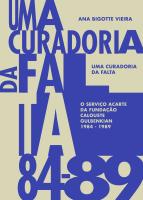 The questions raised by Ana Bigotte, on the contrary, are not formulated in the strict disciplinary framework of art history, but from the porous and open framework of theory and cultural studies, taking as fundamental references the work of authors such as Luís Trindade or Boaventura de Sousa Santos, whose object goes beyond the specific sphere of the artistic to approach culture as a social process with multiple branches. It does so by following the path opened by André Lepecki, who formulated interesting hypotheses about the construction of the Portuguese social "body" from the study of dance and performance. This is another distinctive specificity of the Portuguese case that contrasts with that of the neighboring country: the focus on the arts of the body and the so-called "living arts", such as theater, dance, and music.
The questions raised by Ana Bigotte, on the contrary, are not formulated in the strict disciplinary framework of art history, but from the porous and open framework of theory and cultural studies, taking as fundamental references the work of authors such as Luís Trindade or Boaventura de Sousa Santos, whose object goes beyond the specific sphere of the artistic to approach culture as a social process with multiple branches. It does so by following the path opened by André Lepecki, who formulated interesting hypotheses about the construction of the Portuguese social "body" from the study of dance and performance. This is another distinctive specificity of the Portuguese case that contrasts with that of the neighboring country: the focus on the arts of the body and the so-called "living arts", such as theater, dance, and music.
06.03.2023 | by Jesús Carrillo
 At its heart, MIXED is an exploration of racial and cultural identity. MIXED deals specifically with people that have mixed heritage, delving into the experiences of each subject that also echo his own. The series addresses the existential feeling of not fully belonging, while examining the cost of assimilation within society. The conversations focus especially on the contradiction of fitting in everywhere but nowhere at the same time and the resulting shoot is a collaboration that encompasses the themes considered.
At its heart, MIXED is an exploration of racial and cultural identity. MIXED deals specifically with people that have mixed heritage, delving into the experiences of each subject that also echo his own. The series addresses the existential feeling of not fully belonging, while examining the cost of assimilation within society. The conversations focus especially on the contradiction of fitting in everywhere but nowhere at the same time and the resulting shoot is a collaboration that encompasses the themes considered.
02.11.2022 | by Theo Gould
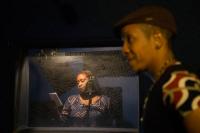 Notorious for blending the political and profane, denounced for its roots in Vodou, rabòday music is the defiant — and wildly popular — sound of a new, disaffected generation of Haitians. As the country prepares for long-awaited elections starting in August, stars of the genre have become unusually influential by turning public anxieties into dance-friendly anthems.
Notorious for blending the political and profane, denounced for its roots in Vodou, rabòday music is the defiant — and wildly popular — sound of a new, disaffected generation of Haitians. As the country prepares for long-awaited elections starting in August, stars of the genre have become unusually influential by turning public anxieties into dance-friendly anthems.
28.01.2022 | by Susana Ferreira
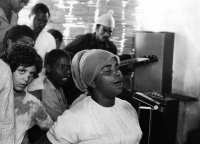 How a music shaped by slavery, epidemics, famine and mass migration travelled the world, narrating stories of suffering and resistance. Over time, morna, also known as “música rainha” (“queen music”), underwent several changes to its melodic and rhythmic characteristics, becoming the slower, more mournful version heard today. Characterised by three dimensions of melody, poetry and dance, morna is often sung in Kriolu, Portuguese-based Creole, though it can be instrumental, too.
How a music shaped by slavery, epidemics, famine and mass migration travelled the world, narrating stories of suffering and resistance. Over time, morna, also known as “música rainha” (“queen music”), underwent several changes to its melodic and rhythmic characteristics, becoming the slower, more mournful version heard today. Characterised by three dimensions of melody, poetry and dance, morna is often sung in Kriolu, Portuguese-based Creole, though it can be instrumental, too.
26.05.2021 | by Beatriz Ramalho da Silva
 Danting is clear with her intention. She was not in Italy to problematize or victimize the refugees or migrants. She was there to tell a story with her own poetics and narrative. I can not agree more with Rainer Maria Rilke that art should not be critiqued, and I do believe that I must fail in writing any critique, since I only follow my own instinctive way of following art. In this sense, and in my personal perception, I am glad to have discovered a filmic narrative from a Chinese Baip filmmaker. Her name is Danting Chen.
Danting is clear with her intention. She was not in Italy to problematize or victimize the refugees or migrants. She was there to tell a story with her own poetics and narrative. I can not agree more with Rainer Maria Rilke that art should not be critiqued, and I do believe that I must fail in writing any critique, since I only follow my own instinctive way of following art. In this sense, and in my personal perception, I am glad to have discovered a filmic narrative from a Chinese Baip filmmaker. Her name is Danting Chen.
07.03.2021 | by Cheong Kin Man
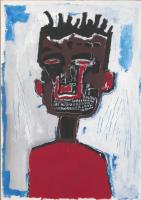 Jean-Michel Basquiat wasn’t a fan of interviews, and on the rare occasions he surrendered to them, his responses were terse—even cryptic. Despite this, the painter’s words reveal a great deal about his inspirations and his all-consuming process. They offer a window into his approach, in which he remixed references from art history, the streets of 1980s New York, and the tumult of pop culture with his Carribean heritage and his identity as a young black man.
Jean-Michel Basquiat wasn’t a fan of interviews, and on the rare occasions he surrendered to them, his responses were terse—even cryptic. Despite this, the painter’s words reveal a great deal about his inspirations and his all-consuming process. They offer a window into his approach, in which he remixed references from art history, the streets of 1980s New York, and the tumult of pop culture with his Carribean heritage and his identity as a young black man.
08.02.2021 | by Alexxa Gotthardt
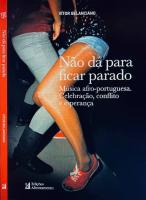 The relevance of black participation in Portugal in the most diverse areas - including music - dates back several hundred years, but is rarely articulated in dominant public narratives. It is not, of course, that blacks in Portugal have no voice or are not present in the daily life of the country. It's often about talking without being considered, seeing without being seen, singing without being listened to - at least outside a cultural sphere that tends to be more circumscribed.
The relevance of black participation in Portugal in the most diverse areas - including music - dates back several hundred years, but is rarely articulated in dominant public narratives. It is not, of course, that blacks in Portugal have no voice or are not present in the daily life of the country. It's often about talking without being considered, seeing without being seen, singing without being listened to - at least outside a cultural sphere that tends to be more circumscribed.
01.02.2021 | by Inês Nascimento Rodrigues
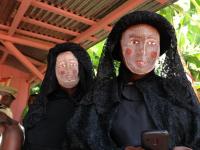 São Tomé and Príncipe, an archipelago on the Equator, boasts one of the most curious performances of popular imagination. Tchiloli is the fruit of cultural (and at times violent) encounters and creolisation. It is a delightful ethnodrama/ethnotheatre that unites music, movements and 16th century texts in one ceremony.
São Tomé and Príncipe, an archipelago on the Equator, boasts one of the most curious performances of popular imagination. Tchiloli is the fruit of cultural (and at times violent) encounters and creolisation. It is a delightful ethnodrama/ethnotheatre that unites music, movements and 16th century texts in one ceremony.
01.02.2021 | by Marta Lança
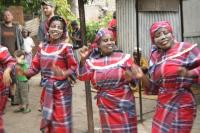 Tufo, therefore, has strong religions roots. The same archival documents reveal that, in its origin, the dance was only performed in rituals and festive moments associated to the Muslim faith, but with time the dance was popularized and secularized.
Tufo, therefore, has strong religions roots. The same archival documents reveal that, in its origin, the dance was only performed in rituals and festive moments associated to the Muslim faith, but with time the dance was popularized and secularized.
29.01.2020 | by Hélio Nguane
 Beyond the old question of the relationship between ethics and aesthetics, the controversy encourages us to ask how rap – understood as a site for the denunciation of racism and the visibilization of the daily life of racialized, subordinated groups – has, itself, been complicit with other kinds of invisibilities and oppressions.
Beyond the old question of the relationship between ethics and aesthetics, the controversy encourages us to ask how rap – understood as a site for the denunciation of racism and the visibilization of the daily life of racialized, subordinated groups – has, itself, been complicit with other kinds of invisibilities and oppressions.
23.10.2019 | by Miguel Cardina
 One hears the intense and physical music of Scúru Fitchádu and it is perceived that it comes from the entrails, populated by a whirlwind of emotions that long people the imaginary of Marcus. Why have not they been patented before? "Every day I think about it," says the 37-year-old musician. "Why did not this come sooner if it always lived within me? Do not know. But glad it came out now. A few years ago maybe it was too soon and I did not have the same kind of answers I'm getting now.
One hears the intense and physical music of Scúru Fitchádu and it is perceived that it comes from the entrails, populated by a whirlwind of emotions that long people the imaginary of Marcus. Why have not they been patented before? "Every day I think about it," says the 37-year-old musician. "Why did not this come sooner if it always lived within me? Do not know. But glad it came out now. A few years ago maybe it was too soon and I did not have the same kind of answers I'm getting now.
02.04.2019 | by Vítor Belanciano
 Women come together to perform Tufo wearing capulanas and bright-coloured shirts. Their faces are covered with mussiro, a type of facial cream used by Macua women. They tie head wraps and use jewellery, necklaces and bracelets for an extravagant finishing touch.
Women come together to perform Tufo wearing capulanas and bright-coloured shirts. Their faces are covered with mussiro, a type of facial cream used by Macua women. They tie head wraps and use jewellery, necklaces and bracelets for an extravagant finishing touch.
27.02.2019 | by Hélio Nguane
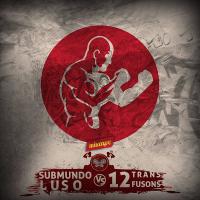 “Submundo Luso vs 12transfusons” is a new mix tape that features rappers from Angola, Mozambique, Brazil and Portugal. Released on New Year’s Eve after five months of preparation, the project brought together hip-hop promoters from the blogs Submundo Luso [pt] in Mozambique and 12transfusons [pt] in Angola. The two met online and the former invited the latter to collaborate.
In this interview for the blog Underground Lusófono [pt], Astérix o Néfilim (Astérix the Giant, in English), a rapper, producer and manager at 12transfusons, talks about the effort, which counted the participation of artists from all over the globe and is now available as a free download. He also shares his views on the artistic scene in Cabinda – a tiny province in the north of Angola – and the challenges caused by such isolation.
“Submundo Luso vs 12transfusons” is a new mix tape that features rappers from Angola, Mozambique, Brazil and Portugal. Released on New Year’s Eve after five months of preparation, the project brought together hip-hop promoters from the blogs Submundo Luso [pt] in Mozambique and 12transfusons [pt] in Angola. The two met online and the former invited the latter to collaborate.
In this interview for the blog Underground Lusófono [pt], Astérix o Néfilim (Astérix the Giant, in English), a rapper, producer and manager at 12transfusons, talks about the effort, which counted the participation of artists from all over the globe and is now available as a free download. He also shares his views on the artistic scene in Cabinda – a tiny province in the north of Angola – and the challenges caused by such isolation.
28.01.2014 | by vários
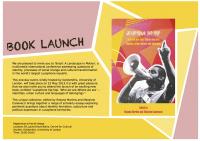 “This fascinating book looks at hip hop in the Lusophone world. Its authors explore the various aspects of hip hop culture - break dance, graffiti, rap music, and social movements based on this street culture. They scrutinise local cases and examine the multiple links between hip hop on both sides of the Atlantic, such as the new global codes that have developed among Portuguese-speaking young people.”
“This fascinating book looks at hip hop in the Lusophone world. Its authors explore the various aspects of hip hop culture - break dance, graffiti, rap music, and social movements based on this street culture. They scrutinise local cases and examine the multiple links between hip hop on both sides of the Atlantic, such as the new global codes that have developed among Portuguese-speaking young people.”
02.05.2013 | by Rosana Martins
The album is titled “Ex-Combatentes” (Ex-Combatants), which happens also to be the name of the street he lives on in Luanda, but the music in sound and lyrics has little to do with war. Unless one thinks of war in the widest sense – war with the self, war with family, neighbors, friends, etc.
07.09.2012 | by Marissa Moorman
 He makes Angolan music for 40 years, has nearly 500 musical themes recorded and “many miles on the road”. Bonga, whose voice identifies with Angola, has always been attentive to the reality of his country, preserving and disseminating the Semba musical style. He is keen to highlight: “Just like Brazil has Samba and America has Rock, Angola has Semba. It is the music I heard in the cradle”. His musical path was marked by his respect to “origin, tradition and pulse of the Semba”, taking it and spreading it around the world.
He makes Angolan music for 40 years, has nearly 500 musical themes recorded and “many miles on the road”. Bonga, whose voice identifies with Angola, has always been attentive to the reality of his country, preserving and disseminating the Semba musical style. He is keen to highlight: “Just like Brazil has Samba and America has Rock, Angola has Semba. It is the music I heard in the cradle”. His musical path was marked by his respect to “origin, tradition and pulse of the Semba”, taking it and spreading it around the world.
23.07.2012 | by Marta Lança
 While some commentators and journalists have dismissed Occupy Wall Street as carnival, lawmakers and police officers did not miss the point. They reached back to a mid-nineteenth century ban on masking to arrest occupiers wearing as little as a folded bandana on the forehead, leaving little doubt about their fear of Carnival as a potent form of political protest. New York Times journalist Ginia Bellafante initially expressed skepticism about 'air[ing] societal grievance as carnival,' but just a few days later she warned against 'criminalizing costume,' thus changing her condescension to caution as she confirmed the police’s point: masking can be dangerous, Carnival is serious business.
While some commentators and journalists have dismissed Occupy Wall Street as carnival, lawmakers and police officers did not miss the point. They reached back to a mid-nineteenth century ban on masking to arrest occupiers wearing as little as a folded bandana on the forehead, leaving little doubt about their fear of Carnival as a potent form of political protest. New York Times journalist Ginia Bellafante initially expressed skepticism about 'air[ing] societal grievance as carnival,' but just a few days later she warned against 'criminalizing costume,' thus changing her condescension to caution as she confirmed the police’s point: masking can be dangerous, Carnival is serious business.
21.07.2012 | by Claire Tancons
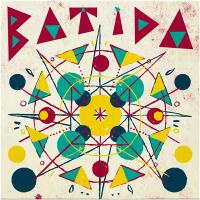 We are at the Batida workshop. A space in a garages complex in Lisbon. On the outside it’s just that. A building with nothing that distinguishes it from the others. Inside there is Pedro Coquenão, or DJ Mpula, or the man who invented Batida. Inside there, this 37-year-old Portuguese man born in Huambo (Angola), which he left with the onset of civil war, an Angolan living in Portugal since then, talks non-stop about all that Batida means. We could even say that we do not need to hear everything he is saying. The speakers release South African music. Scattered throughout the space we see a marimba, extemporary drums took out from diesel cans, Angolan beer “Cuca” bars, photos of Coquenão’s travels to Luanda, and drums that, in concert, will be illuminated from the inside as efficient do-it-yourself scenery. All this is Batida.
We are at the Batida workshop. A space in a garages complex in Lisbon. On the outside it’s just that. A building with nothing that distinguishes it from the others. Inside there is Pedro Coquenão, or DJ Mpula, or the man who invented Batida. Inside there, this 37-year-old Portuguese man born in Huambo (Angola), which he left with the onset of civil war, an Angolan living in Portugal since then, talks non-stop about all that Batida means. We could even say that we do not need to hear everything he is saying. The speakers release South African music. Scattered throughout the space we see a marimba, extemporary drums took out from diesel cans, Angolan beer “Cuca” bars, photos of Coquenão’s travels to Luanda, and drums that, in concert, will be illuminated from the inside as efficient do-it-yourself scenery. All this is Batida.
04.06.2012 | by
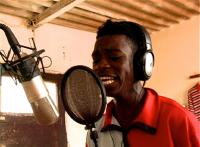 This article explores the role of Kuduro, the popular Angolan electronic music and dance style in the process of updating the national Angolan identity called angolanidade to the conditions of the new millennium.
This article explores the role of Kuduro, the popular Angolan electronic music and dance style in the process of updating the national Angolan identity called angolanidade to the conditions of the new millennium.
27.05.2012 | by Nadine Siegert and Stefanie Alisch
 When Sarah Bergh and Sandra Chatterjee asked me to write some thoughts about Dance, Body and Protest, one of the first thing, that I remembered was one of my dance productions called Permanent Prints (1999), premiered at Kampnagel Hamburg. This production was a triptych, constituted of three different choreographic works, one of those pieces, we called it Duett, casted by myself and Cristina Moura. While the audience rushed into the theater space we would be on stage, sitting at a chair, looking at the audience, with an empty look, the set-design was a self-written banner hanging above our heads, on which we could read the statement „We won’t move“. My main concern was to bring up themes for reflection such as multicultural identities (today I would have used the terminology ‚body of cultures‘), gender, racism, sexism, and social political conflicts. Dancer and choreographer Angela Guerreiro has never performed unclothed in her solos or pieces; instead, she has addressed multicultural identity and gender issues, racism, sexism and (social) political conflicts in her work.
When Sarah Bergh and Sandra Chatterjee asked me to write some thoughts about Dance, Body and Protest, one of the first thing, that I remembered was one of my dance productions called Permanent Prints (1999), premiered at Kampnagel Hamburg. This production was a triptych, constituted of three different choreographic works, one of those pieces, we called it Duett, casted by myself and Cristina Moura. While the audience rushed into the theater space we would be on stage, sitting at a chair, looking at the audience, with an empty look, the set-design was a self-written banner hanging above our heads, on which we could read the statement „We won’t move“. My main concern was to bring up themes for reflection such as multicultural identities (today I would have used the terminology ‚body of cultures‘), gender, racism, sexism, and social political conflicts. Dancer and choreographer Angela Guerreiro has never performed unclothed in her solos or pieces; instead, she has addressed multicultural identity and gender issues, racism, sexism and (social) political conflicts in her work.  The questions raised by Ana Bigotte, on the contrary, are not formulated in the strict disciplinary framework of art history, but from the porous and open framework of theory and cultural studies, taking as fundamental references the work of authors such as Luís Trindade or Boaventura de Sousa Santos, whose object goes beyond the specific sphere of the artistic to approach culture as a social process with multiple branches. It does so by following the path opened by André Lepecki, who formulated interesting hypotheses about the construction of the Portuguese social "body" from the study of dance and performance. This is another distinctive specificity of the Portuguese case that contrasts with that of the neighboring country: the focus on the arts of the body and the so-called "living arts", such as theater, dance, and music.
The questions raised by Ana Bigotte, on the contrary, are not formulated in the strict disciplinary framework of art history, but from the porous and open framework of theory and cultural studies, taking as fundamental references the work of authors such as Luís Trindade or Boaventura de Sousa Santos, whose object goes beyond the specific sphere of the artistic to approach culture as a social process with multiple branches. It does so by following the path opened by André Lepecki, who formulated interesting hypotheses about the construction of the Portuguese social "body" from the study of dance and performance. This is another distinctive specificity of the Portuguese case that contrasts with that of the neighboring country: the focus on the arts of the body and the so-called "living arts", such as theater, dance, and music.  At its heart, MIXED is an exploration of racial and cultural identity. MIXED deals specifically with people that have mixed heritage, delving into the experiences of each subject that also echo his own. The series addresses the existential feeling of not fully belonging, while examining the cost of assimilation within society. The conversations focus especially on the contradiction of fitting in everywhere but nowhere at the same time and the resulting shoot is a collaboration that encompasses the themes considered.
At its heart, MIXED is an exploration of racial and cultural identity. MIXED deals specifically with people that have mixed heritage, delving into the experiences of each subject that also echo his own. The series addresses the existential feeling of not fully belonging, while examining the cost of assimilation within society. The conversations focus especially on the contradiction of fitting in everywhere but nowhere at the same time and the resulting shoot is a collaboration that encompasses the themes considered.  Notorious for blending the political and profane, denounced for its roots in Vodou, rabòday music is the defiant — and wildly popular — sound of a new, disaffected generation of Haitians. As the country prepares for long-awaited elections starting in August, stars of the genre have become unusually influential by turning public anxieties into dance-friendly anthems.
Notorious for blending the political and profane, denounced for its roots in Vodou, rabòday music is the defiant — and wildly popular — sound of a new, disaffected generation of Haitians. As the country prepares for long-awaited elections starting in August, stars of the genre have become unusually influential by turning public anxieties into dance-friendly anthems.  How a music shaped by slavery, epidemics, famine and mass migration travelled the world, narrating stories of suffering and resistance. Over time, morna, also known as “música rainha” (“queen music”), underwent several changes to its melodic and rhythmic characteristics, becoming the slower, more mournful version heard today. Characterised by three dimensions of melody, poetry and dance, morna is often sung in Kriolu, Portuguese-based Creole, though it can be instrumental, too.
How a music shaped by slavery, epidemics, famine and mass migration travelled the world, narrating stories of suffering and resistance. Over time, morna, also known as “música rainha” (“queen music”), underwent several changes to its melodic and rhythmic characteristics, becoming the slower, more mournful version heard today. Characterised by three dimensions of melody, poetry and dance, morna is often sung in Kriolu, Portuguese-based Creole, though it can be instrumental, too.  Danting is clear with her intention. She was not in Italy to problematize or victimize the refugees or migrants. She was there to tell a story with her own poetics and narrative. I can not agree more with Rainer Maria Rilke that art should not be critiqued, and I do believe that I must fail in writing any critique, since I only follow my own instinctive way of following art. In this sense, and in my personal perception, I am glad to have discovered a filmic narrative from a Chinese Baip filmmaker. Her name is Danting Chen.
Danting is clear with her intention. She was not in Italy to problematize or victimize the refugees or migrants. She was there to tell a story with her own poetics and narrative. I can not agree more with Rainer Maria Rilke that art should not be critiqued, and I do believe that I must fail in writing any critique, since I only follow my own instinctive way of following art. In this sense, and in my personal perception, I am glad to have discovered a filmic narrative from a Chinese Baip filmmaker. Her name is Danting Chen.  Jean-Michel Basquiat wasn’t a fan of interviews, and on the rare occasions he surrendered to them, his responses were terse—even cryptic. Despite this, the painter’s words reveal a great deal about his inspirations and his all-consuming process. They offer a window into his approach, in which he remixed references from art history, the streets of 1980s New York, and the tumult of pop culture with his Carribean heritage and his identity as a young black man.
Jean-Michel Basquiat wasn’t a fan of interviews, and on the rare occasions he surrendered to them, his responses were terse—even cryptic. Despite this, the painter’s words reveal a great deal about his inspirations and his all-consuming process. They offer a window into his approach, in which he remixed references from art history, the streets of 1980s New York, and the tumult of pop culture with his Carribean heritage and his identity as a young black man.  The relevance of black participation in Portugal in the most diverse areas - including music - dates back several hundred years, but is rarely articulated in dominant public narratives. It is not, of course, that blacks in Portugal have no voice or are not present in the daily life of the country. It's often about talking without being considered, seeing without being seen, singing without being listened to - at least outside a cultural sphere that tends to be more circumscribed.
The relevance of black participation in Portugal in the most diverse areas - including music - dates back several hundred years, but is rarely articulated in dominant public narratives. It is not, of course, that blacks in Portugal have no voice or are not present in the daily life of the country. It's often about talking without being considered, seeing without being seen, singing without being listened to - at least outside a cultural sphere that tends to be more circumscribed.  São Tomé and Príncipe, an archipelago on the Equator, boasts one of the most curious performances of popular imagination. Tchiloli is the fruit of cultural (and at times violent) encounters and creolisation. It is a delightful ethnodrama/ethnotheatre that unites music, movements and 16th century texts in one ceremony.
São Tomé and Príncipe, an archipelago on the Equator, boasts one of the most curious performances of popular imagination. Tchiloli is the fruit of cultural (and at times violent) encounters and creolisation. It is a delightful ethnodrama/ethnotheatre that unites music, movements and 16th century texts in one ceremony.  Tufo, therefore, has strong religions roots. The same archival documents reveal that, in its origin, the dance was only performed in rituals and festive moments associated to the Muslim faith, but with time the dance was popularized and secularized.
Tufo, therefore, has strong religions roots. The same archival documents reveal that, in its origin, the dance was only performed in rituals and festive moments associated to the Muslim faith, but with time the dance was popularized and secularized.  Beyond the old question of the relationship between ethics and aesthetics, the controversy encourages us to ask how rap – understood as a site for the denunciation of racism and the visibilization of the daily life of racialized, subordinated groups – has, itself, been complicit with other kinds of invisibilities and oppressions.
Beyond the old question of the relationship between ethics and aesthetics, the controversy encourages us to ask how rap – understood as a site for the denunciation of racism and the visibilization of the daily life of racialized, subordinated groups – has, itself, been complicit with other kinds of invisibilities and oppressions.  One hears the intense and physical music of Scúru Fitchádu and it is perceived that it comes from the entrails, populated by a whirlwind of emotions that long people the imaginary of Marcus. Why have not they been patented before? "Every day I think about it," says the 37-year-old musician. "Why did not this come sooner if it always lived within me? Do not know. But glad it came out now. A few years ago maybe it was too soon and I did not have the same kind of answers I'm getting now.
One hears the intense and physical music of Scúru Fitchádu and it is perceived that it comes from the entrails, populated by a whirlwind of emotions that long people the imaginary of Marcus. Why have not they been patented before? "Every day I think about it," says the 37-year-old musician. "Why did not this come sooner if it always lived within me? Do not know. But glad it came out now. A few years ago maybe it was too soon and I did not have the same kind of answers I'm getting now.  Women come together to perform Tufo wearing capulanas and bright-coloured shirts. Their faces are covered with mussiro, a type of facial cream used by Macua women. They tie head wraps and use jewellery, necklaces and bracelets for an extravagant finishing touch.
Women come together to perform Tufo wearing capulanas and bright-coloured shirts. Their faces are covered with mussiro, a type of facial cream used by Macua women. They tie head wraps and use jewellery, necklaces and bracelets for an extravagant finishing touch.  “Submundo Luso vs 12transfusons” is a new mix tape that features rappers from Angola, Mozambique, Brazil and Portugal. Released on New Year’s Eve after five months of preparation, the project brought together hip-hop promoters from the blogs Submundo Luso [pt] in Mozambique and 12transfusons [pt] in Angola. The two met online and the former invited the latter to collaborate.
In this interview for the blog Underground Lusófono [pt], Astérix o Néfilim (Astérix the Giant, in English), a rapper, producer and manager at 12transfusons, talks about the effort, which counted the participation of artists from all over the globe and is now available as a free download. He also shares his views on the artistic scene in Cabinda – a tiny province in the north of Angola – and the challenges caused by such isolation.
“Submundo Luso vs 12transfusons” is a new mix tape that features rappers from Angola, Mozambique, Brazil and Portugal. Released on New Year’s Eve after five months of preparation, the project brought together hip-hop promoters from the blogs Submundo Luso [pt] in Mozambique and 12transfusons [pt] in Angola. The two met online and the former invited the latter to collaborate.
In this interview for the blog Underground Lusófono [pt], Astérix o Néfilim (Astérix the Giant, in English), a rapper, producer and manager at 12transfusons, talks about the effort, which counted the participation of artists from all over the globe and is now available as a free download. He also shares his views on the artistic scene in Cabinda – a tiny province in the north of Angola – and the challenges caused by such isolation.  “This fascinating book looks at hip hop in the Lusophone world. Its authors explore the various aspects of hip hop culture - break dance, graffiti, rap music, and social movements based on this street culture. They scrutinise local cases and examine the multiple links between hip hop on both sides of the Atlantic, such as the new global codes that have developed among Portuguese-speaking young people.”
“This fascinating book looks at hip hop in the Lusophone world. Its authors explore the various aspects of hip hop culture - break dance, graffiti, rap music, and social movements based on this street culture. They scrutinise local cases and examine the multiple links between hip hop on both sides of the Atlantic, such as the new global codes that have developed among Portuguese-speaking young people.”  He makes Angolan music for 40 years, has nearly 500 musical themes recorded and “many miles on the road”. Bonga, whose voice identifies with Angola, has always been attentive to the reality of his country, preserving and disseminating the Semba musical style. He is keen to highlight: “Just like Brazil has Samba and America has Rock, Angola has Semba. It is the music I heard in the cradle”. His musical path was marked by his respect to “origin, tradition and pulse of the Semba”, taking it and spreading it around the world.
He makes Angolan music for 40 years, has nearly 500 musical themes recorded and “many miles on the road”. Bonga, whose voice identifies with Angola, has always been attentive to the reality of his country, preserving and disseminating the Semba musical style. He is keen to highlight: “Just like Brazil has Samba and America has Rock, Angola has Semba. It is the music I heard in the cradle”. His musical path was marked by his respect to “origin, tradition and pulse of the Semba”, taking it and spreading it around the world.  While some commentators and journalists have dismissed Occupy Wall Street as carnival, lawmakers and police officers did not miss the point. They reached back to a mid-nineteenth century ban on masking to arrest occupiers wearing as little as a folded bandana on the forehead, leaving little doubt about their fear of Carnival as a potent form of political protest. New York Times journalist Ginia Bellafante initially expressed skepticism about 'air[ing] societal grievance as carnival,' but just a few days later she warned against 'criminalizing costume,' thus changing her condescension to caution as she confirmed the police’s point: masking can be dangerous, Carnival is serious business.
While some commentators and journalists have dismissed Occupy Wall Street as carnival, lawmakers and police officers did not miss the point. They reached back to a mid-nineteenth century ban on masking to arrest occupiers wearing as little as a folded bandana on the forehead, leaving little doubt about their fear of Carnival as a potent form of political protest. New York Times journalist Ginia Bellafante initially expressed skepticism about 'air[ing] societal grievance as carnival,' but just a few days later she warned against 'criminalizing costume,' thus changing her condescension to caution as she confirmed the police’s point: masking can be dangerous, Carnival is serious business.  We are at the Batida workshop. A space in a garages complex in Lisbon. On the outside it’s just that. A building with nothing that distinguishes it from the others. Inside there is Pedro Coquenão, or DJ Mpula, or the man who invented Batida. Inside there, this 37-year-old Portuguese man born in Huambo (Angola), which he left with the onset of civil war, an Angolan living in Portugal since then, talks non-stop about all that Batida means. We could even say that we do not need to hear everything he is saying. The speakers release South African music. Scattered throughout the space we see a marimba, extemporary drums took out from diesel cans, Angolan beer “Cuca” bars, photos of Coquenão’s travels to Luanda, and drums that, in concert, will be illuminated from the inside as efficient do-it-yourself scenery. All this is Batida.
We are at the Batida workshop. A space in a garages complex in Lisbon. On the outside it’s just that. A building with nothing that distinguishes it from the others. Inside there is Pedro Coquenão, or DJ Mpula, or the man who invented Batida. Inside there, this 37-year-old Portuguese man born in Huambo (Angola), which he left with the onset of civil war, an Angolan living in Portugal since then, talks non-stop about all that Batida means. We could even say that we do not need to hear everything he is saying. The speakers release South African music. Scattered throughout the space we see a marimba, extemporary drums took out from diesel cans, Angolan beer “Cuca” bars, photos of Coquenão’s travels to Luanda, and drums that, in concert, will be illuminated from the inside as efficient do-it-yourself scenery. All this is Batida.  This article explores the role of Kuduro, the popular Angolan electronic music and dance style in the process of updating the national Angolan identity called angolanidade to the conditions of the new millennium.
This article explores the role of Kuduro, the popular Angolan electronic music and dance style in the process of updating the national Angolan identity called angolanidade to the conditions of the new millennium. 